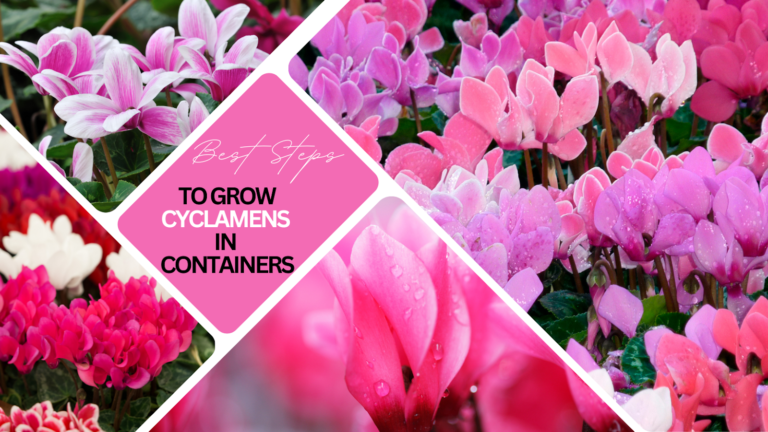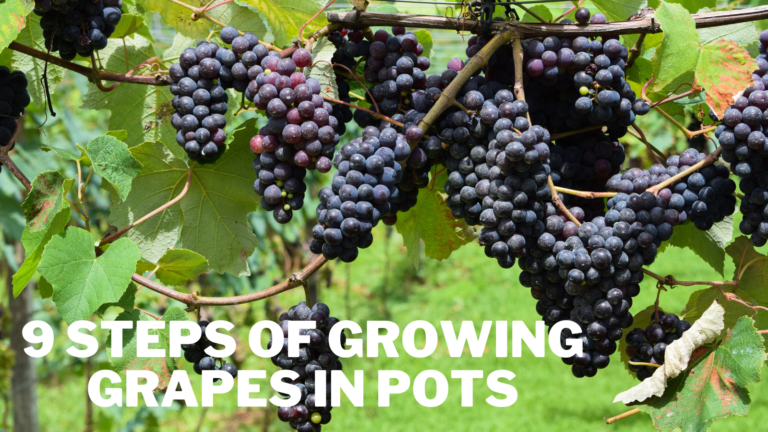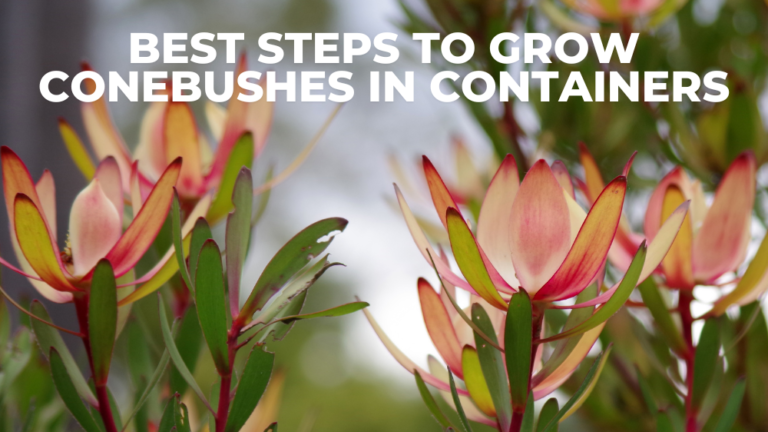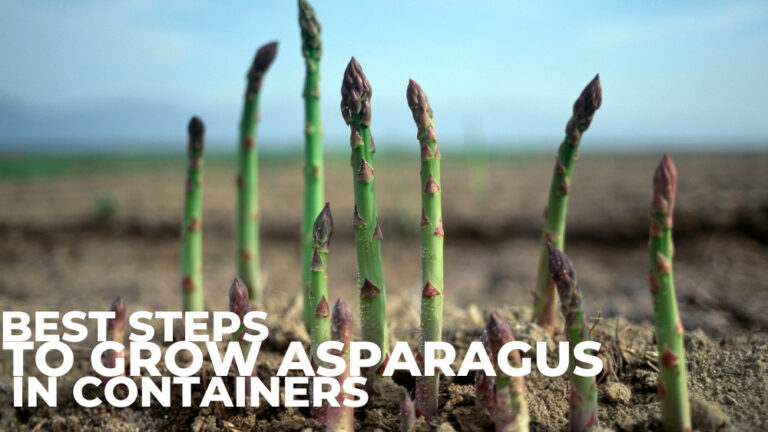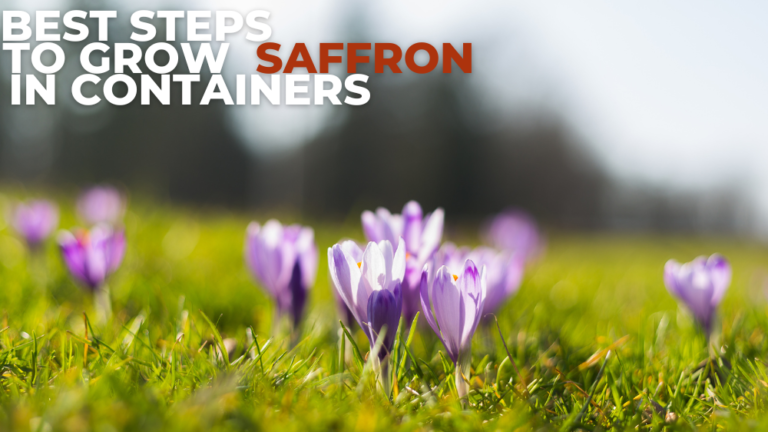Easy Steps To Grow Calendula In A Container
Easy Steps To Grow Calendula In A Container
Gardeners with little room are adept at container growing. Growing in pots helps you conserve space and bring the plant inside if the weather turns bad, whether you're growing annuals, perennials, veggies, or other specimens. Can calendula be grown in pots?
These vibrant flowers provide attractive options for joyful blooms and easy upkeep. For most of the growing season, potted calendula plants add vibrant colour to the patio with their brilliant yellow and orange tones.
In this article, I’ll share some easy and essential steps to help you grow calendula in a container.
History Of Calendula
In the family Asteraceae, the tiny genus calendula contains 15–20 species of herbaceous plants that are native to temperate parts of Eurasia and North Africa.
Calendula officinalis, sometimes known as pot marigold, is a plant mainly produced for ornamental use and frequently used in herbal remedies and cosmetics. The edible ray flowers resemble petals and are sometimes added to salads.
Annual or perennial plants, known as calendulas, have waxy, smooth, or glandular stems. Simple leaves are borne alternately along the stems and may have some toothing.
Some species' leaves feature clasping leaf bases and are sessile (without a leaf stalk). The core disk flowers, which can be yellow, red, or purple, and the yellow or orange ray flowers, which are borne individually, make up the composite flower heads.
Centaurea is a genus of herbaceous plants in the composite family with roughly 500 species (Asteraceae). Most originate from the Old World and are primarily found in the Mediterranean.
Numerous annual and perennial garden plants, including the cornflower, bachelor's button (C. cyanus), and the basket-flower, are part of this genus (C. Americana).
Other names include knapweed, thornless thistle, dusty miller, blue bottle, mountain bluet, sweet-sultan, hard heads, and Spanish buttons.
Types Of Calendula
The vividly coloured flowers known as calendula are similar to marigolds, but there is much more to know about them, including their wide varieties, growing advice, and myriad uses.
1. Pot Marigold
Yellow flower clusters make up the blooms which are present. A flower head (capitulum) with a 4 to 7-cm diameter is present on the inflorescence, and two rows of hairy bracts encircle it. A solitary ray of florets surrounds the disc florets in the center of wild plants. Darker-coloured disc florets are present.
2. Radio Extra
The Radio Extra calendula is a tall plant with cactus-like blossoms. The flowers have a vivid orange colour. One of the strangest varieties of calendula is Radio Extra.
3. Pink Surprise
Pink Surprise Calendula has ruffled golden and yellow blossoms. They feature dark apricot cores and pink borders. Some of the flowers may have an actual pink colour with gold hues.
4. Crown Orange
When grown in rows in a vegetable patch as part of your kitchen garden ideas, this crested amber calendula, which suggests an anemone dahlia, looks fantastic.
It also looks excellent and is utilized as bedding in borders. Combine with Centaurea cyanus ‘Black Ball' for a striking counterpoint to its eye-catching orange blooms.
5. Sunset Buff
This gorgeous cultivar contains chocolate centers and dusky apricot petals with raspberry-red undersides.
You can seed it directly into borders to fill spaces between perennials and roses and use it as a cutting garden flower.
Combination with the resilient annual Cerinthe major ‘Purpurascens' is an excellent way to fill in borders that have gaps.
6. Orange Flash
The Orange Flash is a pretty calendula with pale peach petals and bronze undersides. If you're looking for the most excellent cottage garden plants, consider including them in lovely flowerbeds or growing them as cut flowers in the vegetable patch.
Combined with Verbena bonariensis ‘Lollipop,' the compact variety of this perennially popular plant has lovely purple blooms.
7. Kablouna Yellow
This calendula cultivar should be on your planting list if you enjoy vivid yellow flowers.
It has sunflower-yellow flowers with crested bosses, resembling an anemone dahlia. It can be cultivated as cut flowers in vegetable patches or as bedding on borders.
Growing Calendula In A Container
In warmer areas, calendula (Calendula officinalis) is a short-lived perennial, although it is typically grown as an annual bloom in garden beds and containers in cooler temperate zones.
Calendula is distinct from common marigolds despite being known as pot marigolds (Tagetes spp.).
However, it resembles a daisy and belongs to the Asteraceae family, which also includes chrysanthemums and daisies.
After the final frost, it is planted in the spring and develops rather quickly, blossoming six to eight weeks after seeding. Let’s start to grow calendula in a container.
Choose The Suitable Container
The important thing is to choose a container with many drainage holes for growing calendula.
Calendulas planted in containers require medium fertilizers and ample sunlight.
Although calendula plants prefer full sun, they can grow in milder climates in partial shade—a large, ready-to-plant container filled with organic potting soil works best.
The majority of types, incredibly shorter cultivars, do well in pots. Use any organic potting soil that drains well, or combine garden soil and compost in equal parts to create your mixture. Since this plant dislikes being moist, ensure the pot has plenty of drainage holes.
Grow Calendula From Seeds
Calendula is simple to grow from seeds because they sprout and germinate so quickly. The plants will readily self-seed in the garden, and seeds saved from the blossoms can be stored and transplanted.
About six to eight weeks before the latest day of frost, start calendula seeds indoors in a seed starter mixture.
Or, shortly before the last spring frost date, you can sow them directly into the garden. In two months from sowing, the majority of plants flower. In the garden, these plants frequently self-seed; the seedlings should not be mistaken for weeds.
Location To Grow Calendula In A Container
In the north, calendula enjoys full sun, whereas, in the south, it prefers some shade. Crowding and extreme heat are intolerable to calendula.
Plant calendula in dappled shade in hot summer locations as it may perish in the middle of the summer there.
It thrives in most open environments and will grow in almost any garden. It is a flower that benefits from being ignored and will develop more effectively if left unattended.
You can pluck the blooms once they bloom and utilize them to create vital natural skincare products.
Soil To Grow Calendula In A Container
Calendula requires organically rich, well-drained soil, just like most other daisy family members. The roots may rot in heavy, moist soil.
Although it can survive a variety of soil pHs, this plant is slightly acidic to neutral soil (6.0 to 7.0).
Organically rich, well-drained soil is necessary for growing calendula plants. Although it can handle various pH levels, this plant favours slightly acidic to neutral soil.
For growing calendula, use organic potting soil that drains well, or create a combination using half garden soil and half well-rotted compost.
The important thing is to choose a container with many drainage holes for growing calendula. Calendulas planted in containers require medium fertilizers and ample sunlight.
Although they tolerate light, calendula plants prefer full sunlight. Large, ready-to-plant containers filled with organic potting soil work best.
Plant on soil that is high in compost has good drainage and holds moisture. The pH of the soil where calendulas thrive is 6.6.
Sunlight To Grow Calendula In A Container
Although calendula often thrives in full sun, it may wither and wilt if it doesn't get some afternoon shade during the hottest months.
Calendulas planted in containers require medium fertilizers and ample sunlight. Although calendula plants prefer full sun, they can grow in milder climates in partial shade.
Large, ready-to-plant containers filled with organic potting soil work best. Sun or partial shade Calendula enjoys the more excellent spring and early fall temps than the intense summer heat.
Although the calendula plant generally enjoys full sun in hotter climates, it can occasionally wilt in the summer if not given some afternoon shade.
Pick a location that receives full sun for your calendula. Plants that grow calendula don't need particular soil. A reasonable amount of water is required for calendula plants.
Watering Requirements
Until the plants are established, water them frequently. Only sporadic watering is necessary for mature plants to survive.
Avoid giving these plants excessive water. Keep the soil wet but not soggy. The best practices are applying deep drenches and letting the container air dry before watering again.
The plants do not require fertilizer when compost is included in the soil combination, although a high phosphorus formula can promote more flowers.
Give the calendula plants one to one and a half inches of water once a week when it's hot.
Although plants can survive in low-water situations, routine irrigation promotes summer blooming.
Cut back the plants severely and water them if your calendula plants wither from the summer heat.
They will begin to develop once more when the temperature becomes more relaxed. Allow some plants to set seeds since they can self-sow.
Temperature And Humidity
In scorching locations, calendula may disappear before the end of the summer since it likes mild summer temperatures.
The plants will perish in severe cold. If you anticipate a day or two of frost, you can cover the plants with a frost blanket at night and remove it in the morning as the sun warms the air.
Additionally, three to four inches of mulch will shield the plants from the cold.
Sowing Calendula Seeds
Despite being a native of the Mediterranean, Calendula officinalis has spread throughout the temperate world due to its hardiness.
It thrives in various soil conditions and may even withstand light shade. However, they thrive in sunny locations, primarily on well-drained soil.
Plant them there, and you'll receive hundreds of blossoms in return. The seahorse-like seeds should be sown in the spring or autumn.
You'll see blossoms much earlier if you sow them in the autumn because it will give the plants a head start. The ideal germination temperature for calendula seeds is between 15 and 25°C (59-77°F).
If the temperature is lower or higher than this, you might not see many seedlings sprout. In the fall, seed in a tray or modules with three parts multipurpose soil and one part perlite (or grit) six to eight weeks before the first frost.
Add horticultural grit to the topdress, water it in, and maintain moisture in a well-lit area. 1.25cm (½”) of soil should be used to sow the seeds.
Leaves will start to appear 6–15 days after sowing. The plants will overwinter well with protection from the cold and slugs, and you can put them outside after the last spring frost.
You should plant them separately in modules before winter if you're growing them in a tray.
Calendula seeds can also be sown in modules in the spring. If you're starting them indoors or in a heated greenhouse, use the same steps above and seed them 6–8 weeks before the final date of frost.
Sow after the latest date of the typical frost if your greenhouse is not heated.
Fertilizer
Calendula doesn't require a lot of feeding. It doesn't need any more feeding at all if it is grown in rich garden soil.
A balanced, water-soluble fertilizer may be necessary to feed marginal soils, but over-fertilization might result in lanky, spindly plants.
Container plants need fertilizer that has been diluted and balanced every month.
Calendula doesn't require much food, and in rich garden soil, it doesn't require any more feeding.
A balanced, water-soluble fertilizer should be applied to marginal soils, but too much fertilizer might make the calendula plants skinny and leggy.
Calendula plants grown in containers require monthly feedings with a diluted balanced fertilizer.
If you grow calendula in healthy, well-fed soil, it shouldn't need fertilizer. Halfway through the growing season, the calendula will need to be fertilized with a high-quality, balanced liquid fertilizer if your soil lacks a sufficient amount of well-rotted organic matter.
Pests & Diseases Of Calendula
Calendula plants have no significant insect or disease issues. Slugs and snails may eat them, especially immature plants, and they may occasionally be prone to powdery mildew (which is treated by good air circulation).
To reduce slug and snail damage, keep growing areas free of clutter. Whiteflies and aphids can occasionally be a nuisance, but they can be eliminated by spraying with water or using insecticidal soap. Getting rid of natural enemies makes thrips and aphids more successful.
Spraying insecticidal soap might burn your plants if done on hot days or when the sun is shining directly on the foliage. Slugs consume these plants as well. If you're not afraid of blood, remove slugs by hand.
Plants may be eaten by slugs and snails, especially young ones. Keep the ground clean to lessen slug and snail damage.
Whiteflies and aphids can occasionally be a nuisance. Spray them with water or use insecticidal soap to get rid of them.
Calendula Growing Tips
You can directly sow into the soil with compost or composted manure as mulch. If not, wait until the plants are about an inch or two tall before adding your preferred mulch.
Bring the mulch up to within an inch of the plant, but avoid covering the base of the plant. Mulch will prevent weed growth and keep the soil underneath moist.
Aftercare for calendula is minimal. My primary advice for cultivating them is to let them alone—aside from collecting the flowers—as much as possible.
Stunted development and other difficulties are brought on by overwatering and overfeeding. If you leave them alone, they will happily grow and blossom all summer.
You can prune your plants if they start to grow tall and spindly. To pinch back to a leaf node, use your fingers or a pair of scissors.
Keep your plants at a height of no more than 60 cm (two feet). They use less water, stay bushier and healthier longer, and stand up better to wind.
Potting And Repotting Calendula
Calendula is frequently grown in pots, where it flourishes, despite the common moniker “pot marigold,” which refers to this plant's traditional usage in cooking. The majority of types, incredibly shorter cultivars, do well in pots.
Use any organic potting soil that drains well, or combine garden soil and compost in equal parts to create your mixture.
Since this plant dislikes being moist, ensure the pot has plenty of drainage holes. Specimens in pots require frequent fertilizer feedings with a balanced fertilizer.
Harvesting Calendula
Calendula flowers and leaves can be used as edible flowers in salads and other cuisines, fresh or dried, despite some people finding the peppery taste a little harsh. A deep yellow dye can also be made from the petals.
Pick the flowers early in the morning, after the dew has dried and the flowers are fully opened. To dry the blooms, the cut flower heads should be put out on a screen in a dry, shady area.
When they are paper-dry, turn them occasionally, then store them in canning jars until you're ready to use them.
Harvest calendula blossoms during the summer, when it is the warmest time of day, and the blooms are dehydrated.
By snapping the petals off the plant, you can harvest calendula flowers all season long as they bloom.
Flowers can be dried by being hung in an area with sufficient ventilation, placed on a drying screen, or dried at a low temperature in a dehydrator.
Drying should take place away from the sun. Flowers need seven to ten days to dry completely.
Conclusion
The herb's antifungal and antimicrobial qualities aid in healing harmed body tissues and preventing infection.
Additionally, there is evidence that calendula contains anti-inflammatory and antioxidant compounds, which may lessen muscle soreness and protect against heart disease and cancer.
I trust you enjoyed this article on the Easy Steps To Grow Calendula In A Container. Please stay tuned for more blog posts to come shortly. Take care!
JeannetteZ
>>>Please click here to read my all-inclusive article about Container Gardening<<<
>>>Are you interested in homegrown herbs and medicine? Please click here to find out more about it!<<<
Your Opinion Is Important To Me
Thoughts? Ideas? Questions? I would love to hear from you. Please leave me your questions, experience, and remarks about this article on the Easy Steps To Grow Calendula In A Container in the comments section below. You can also reach me by email at Jeannette@Close-To-Nature.org.
Disclosure
This post may contain affiliate links. As an Amazon Associate and other affiliate programs, I earn from qualifying purchases at no extra cost to you. Read my full affiliate disclosure.
You might also enjoy these blog posts:
Easy Steps To Grow Kava In A Container
Easy Steps To Grow Marigolds In A Container
Easy Steps To Grow Ashwagandha In A Container
Easy Steps To Grow Ginger In A Container






















